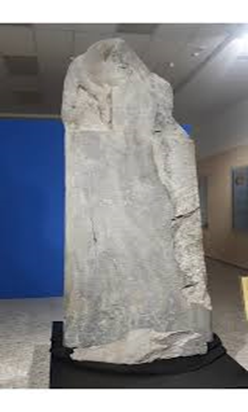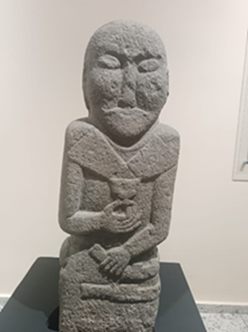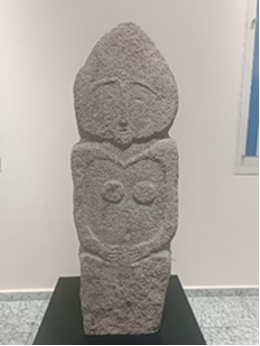Balbals, ancient stone statues, embody not only the material imprints of ancient history, but also the spiritual heritage of our ancestors. Their role in the ancient Turkic period emphasized respect for the spirits of the departed, and today they remind of majestic historical events.
Stone balbals are temporary witnesses of the ancient culture of the Turks, leaving us valuable information about their way of life, art, and religious traditions. According to Turkologists, the term "balbal" means "marks set flat on the ground", indicating their special significance in the history of the ethnos.
The study of these stone monuments began with the work of the outstanding researcher Alkey Margulan, who described the balbals as part of the religious and traditional complex of the ancient Turks. This complex included mausoleums, mounds, slabs, steles and balbals themselves. Many of them were erected in honor of the rulers or prominent personalities of the Turkic world.
Balbals are not only a material evidence of the culture of the Great Steppe, but also inform about the traditional culture of the ethnic group. Among them are stone sculptures, images of people, as well as monuments such as "Kultegin", installed on the banks of the Orkhon River in Mongolia.
These ancient monuments are not limited to one territory. They are found in the vast expanses of Kazakhstan, in the regions of Altai, Tarbagatai, Kalbatau, Mangystau and Akmola region. They can also be found in China, Russia, Uzbekistan, Kyrgyzstan and even Germany.
Balbals are not only an archaeological treasure, but also symbolize the connection with ancient history, reminding us of the greatness and cultural wealth of the Great Turks.

The monument of the Kultegin Kagan script. Mongolia, Kosho-Tsaydam. The first half of the VIII century. /copy/.
The stele is made of blue marble stone. In its upper arched part, three dragons are depicted fighting.
An ancient Turkic text is engraved on three sides of the Kultegin monument, and on the fourth side there is a text in Chinese. This text was written by order of the ruler of the Turkic khaganate Bilge-kagan in honor of the death of commander Kulteghin. A tribal sign, tamga, is carved in the upper part of the text. In the ancient Turkic written tradition, historical events are presented in chronological order. The author of the text is Yollig-tegin.
V. V. Radlov divides the ancient Turkic runic text on this monument into the inscriptions "big" and "small". V. Thomsen does not divide the text according to this principle.
/ Height - 315 cm, width - 132 cm,thickness - 46 cm./

Male statue (ball). Turkestan region. IX-XI centuries.
The material is yellowish-gray sandstone. This sculpture, like most similar works of medieval nomads of Kazakhstan, is a bas-relief on a flat stele. Presumably, this is the image of a noble warrior, richly dressed with jewelry and weapons. An even hryvnia is marked at shoulder level, pointed in the middle, narrowed at the tip. The thumb and index fingers of the bent right hand hold the bowl. The upper edge of the vessel is decorated with a geometric pattern. The left hand is depicted above the sword blade mounted on the belt.

Female statue (balbal). Turkestan region. IX-XI centuries.
Material - gray granite. The head is slightly inclined to the left. The rectangular cap with a flat top has three conical shapes in front, which allows us to attribute it to the category of “three-horned” headdresses characteristic of women's clothing. This mark also gives reason to associate the Sozak statue with the worship of the goddess Umai. The trim with wide sleeves clearly shows the lines of a short “mantle” leaving the neck exposed. Such a notch is marked on one of the statues of a Cumans woman, only the line of the notch is not straight, but zigzag. The arms, located at waist level, are bent at right angles at the elbows. A vessel with a high stem is depicted in the right hand, while the palm of the left hand is left open. There are pendants in the ears.




